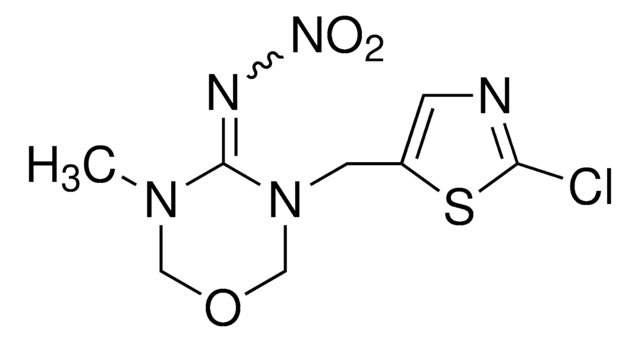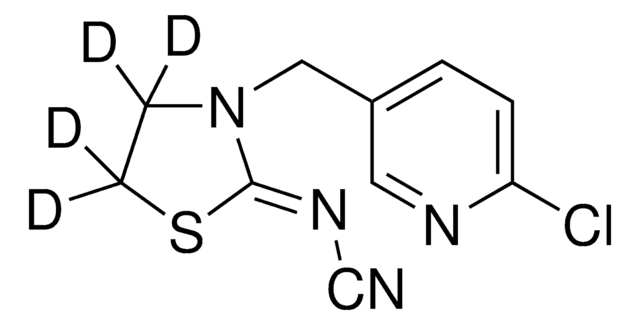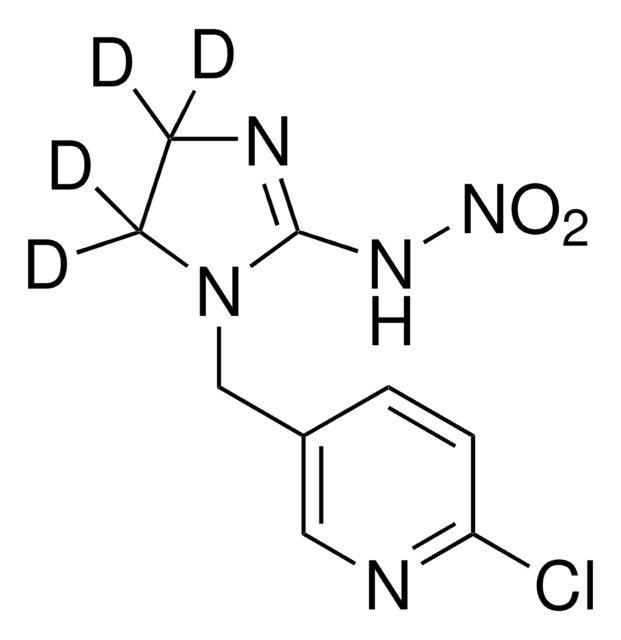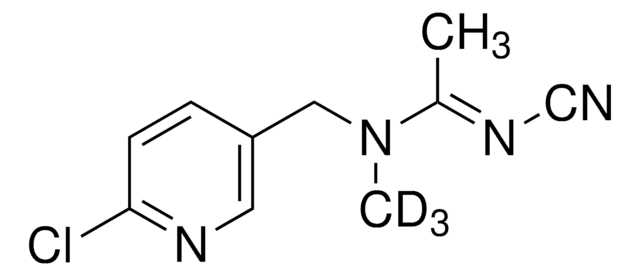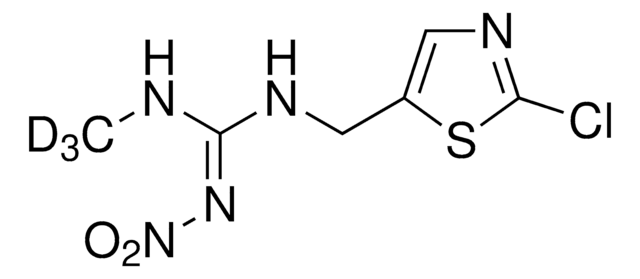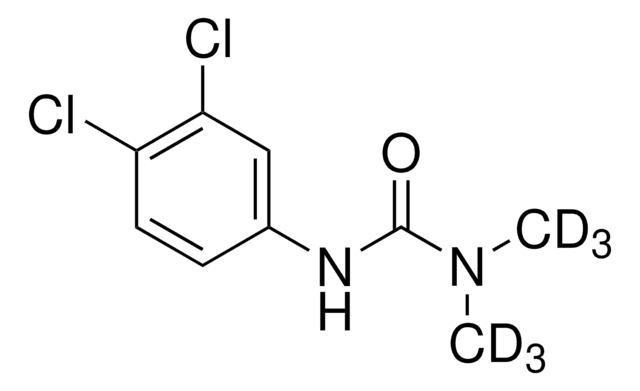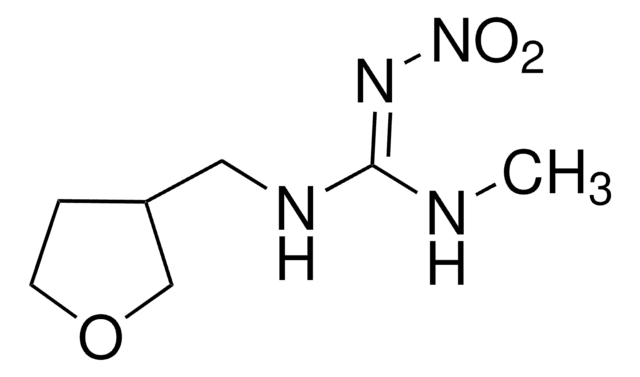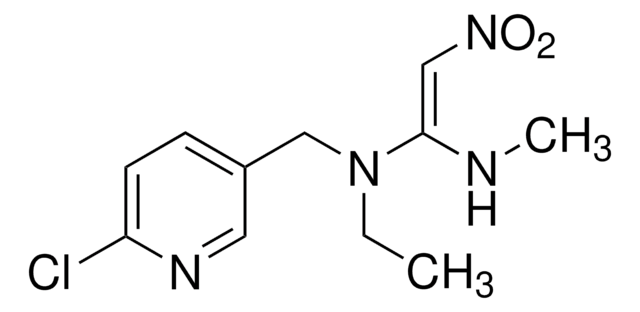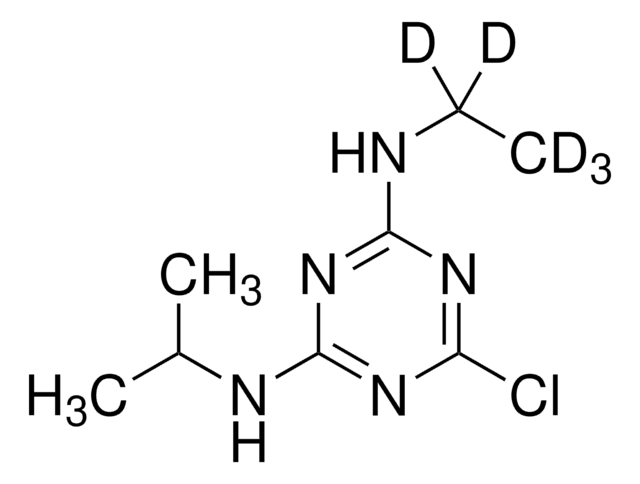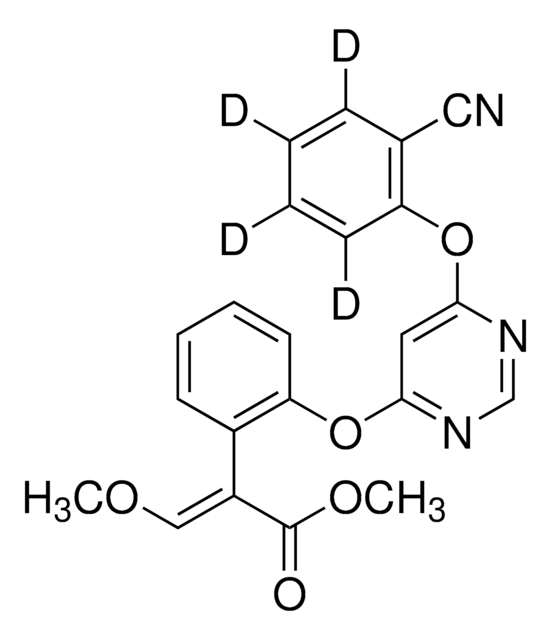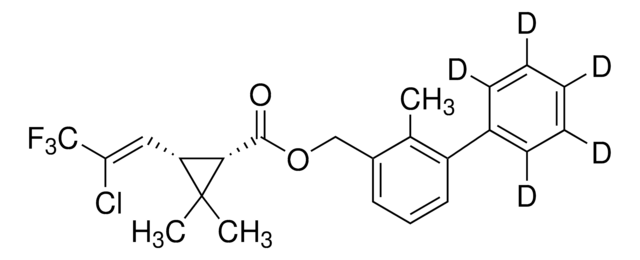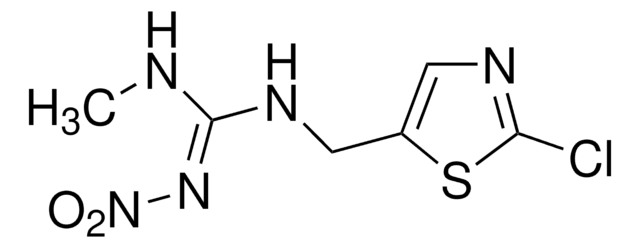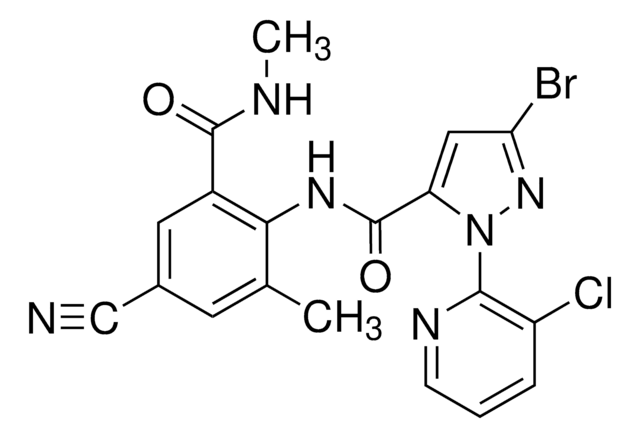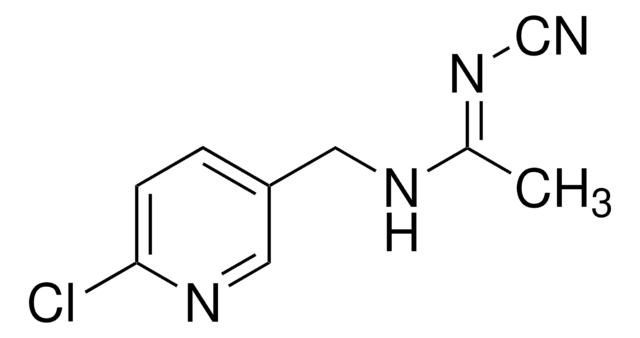おすすめの製品
グレード
analytical standard
品質水準
製品種目
PESTANAL®
アッセイ
≥98.0% (HPLC)
シェルフライフ
limited shelf life, expiry date on the label
テクニック
HPLC: suitable
gas chromatography (GC): suitable
アプリケーション
agriculture
environmental
フォーマット
neat
質量シフト
M+3
SMILES記法
[2H]C([2H])([2H])N1COCN(Cc2cnc(Cl)s2)\C1=N\[N+]([O-])=O
InChI
1S/C8H10ClN5O3S/c1-12-4-17-5-13(8(12)11-14(15)16)3-6-2-10-7(9)18-6/h2H,3-5H2,1H3/b11-8+/i1D3
InChI Key
NWWZPOKUUAIXIW-VZOBLPKOSA-N
詳細
アプリケーション
包装
法的情報
関連製品
シグナルワード
Danger
危険有害性情報
危険有害性の分類
Acute Tox. 4 Oral - Aquatic Acute 1 - Aquatic Chronic 1 - Flam. Sol. 1 - Repr. 2
保管分類コード
4.1B - Flammable solid hazardous materials
WGK
WGK 3
引火点(°F)
Not applicable
引火点(℃)
Not applicable
適用法令
試験研究用途を考慮した関連法令を主に挙げております。化学物質以外については、一部の情報のみ提供しています。 製品を安全かつ合法的に使用することは、使用者の義務です。最新情報により修正される場合があります。WEBの反映には時間を要することがあるため、適宜SDSをご参照ください。
PRTR
第一種指定化学物質
Jan Code
38176-VAR:
38176-25MG:
38176-BULK:
この製品を見ている人はこちらもチェック
プロトコル
Learn more about Neonicotinoids - active substances used in plant protection products to control harmful insects.
On Friday, April 27, 2018, the European Union decided to ban the use of three neonicotinoid insecticides from use on field crops, having deemed them dangerous to bees. This application demonstrates the analysis of these banned compounds and others from dandelion blossoms using QuEChERS and LC-MS.
ライフサイエンス、有機合成、材料科学、クロマトグラフィー、分析など、あらゆる分野の研究に経験のあるメンバーがおります。.
製品に関するお問い合わせはこちら(テクニカルサービス)